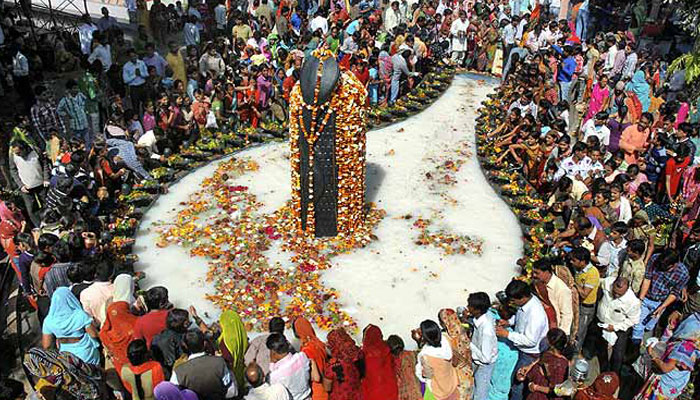TRENDING TAGS :
Week-long Mahashivratri celebrations begin in Himachal Pradesh
Mandi: A day after celebrations ended in other northern states, Mahashivratri festivities, unique to this Himachal Pradesh town that will continue for a week, began on Thursday amidst a gathering of over 200 hill gods and goddesses.
The festival is celebrated with a difference in this historical town, popularly known as Chhoti Kashi.
Like the week-long Kullu Dussehra festivities, Mandi's Mahashivratri sees a congregation of the divine and the temporal.
The deities that are venerated in temples dotted across the region are brought here for the celebrations in beautifully decorated palanquins.
Deity Kamrunag, the main guest, reached the town on Tuesday along with hundreds of his devotees in a colourful procession amid sounds of trumpets and drums.
The festival dates back to 1526, when this town, known for its ancient temples, was founded during the rule of Ajbar Sen.
Ajbar Sen invited local deities to mark the founding of the new town, and setting a precedent that is still followed.
Also Read: Kedarnath shrine to open for pilgrims on April 29
"Over 200 deities have been extended invitation for the Mahashivratri festival. Most of them have reached here and will stay till the festival concludes on February 21," Deputy Commissioner Rugved Thakur, chief organiser of the festival, told IANS.
Mandi, on the Chandigarh-Manali national highway, is dotted with more than 80 temples built in typical hill architecture.
The prominent temples here are those of Bhutnath, Triloki Nath, Jagannath, Tarna Devi and Jalpa Devi.
The rulers of Mandi state were devotees of Lord Shiva.
Legend has it that Sen (1499-1534) saw in his dream a cow offering milk to an idol of Lord Shiva. His dream became reality, because, according to legend, he actually once saw a cow make a milk offering to an idol.
That was when the ruler constructed a temple in 1526 -- the Bhutnath temple -- dedicated to Lord Shiva.
The foundation of Mandi town was laid at the same time, and Sen later shifted his capital here.
You may also Read: Motivagers club helps senior citizens celebrate love this Valentine’s Day
The tradition has continued even after the rule of princely states came to an end. The administration also offers an honorarium to the "kardars" (attendants of deities) for participating in the festival.
During the first day of the fair, Lord Madho Rai, an incarnation of Lord Vishnu and the chief deity, leads the procession.
The assembled deities follow him in beautifully decorated palanquins, as per protocol, and assemble at the Bhutnath temple.
Three such processions, called Jaleb, would be taken out on the opening, middle and concluding days of the fair.
Every year the festival attracts scores of tourists, especially foreigners, besides many researchers who study the gods and goddesses.
--IANS inputs



